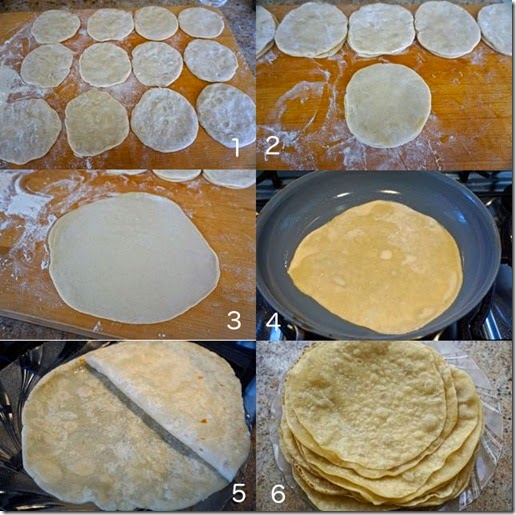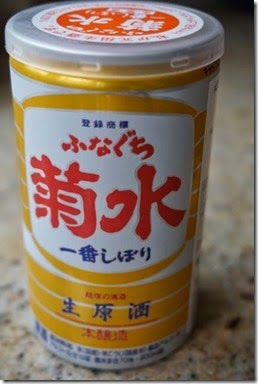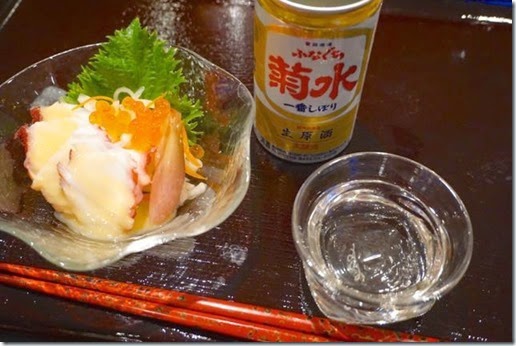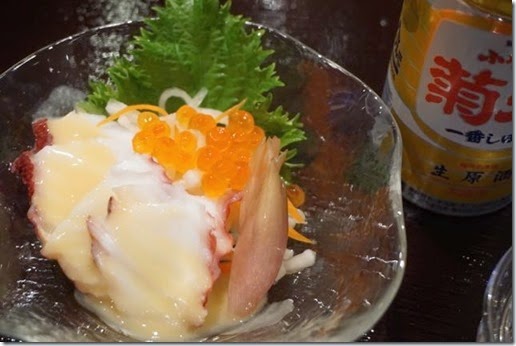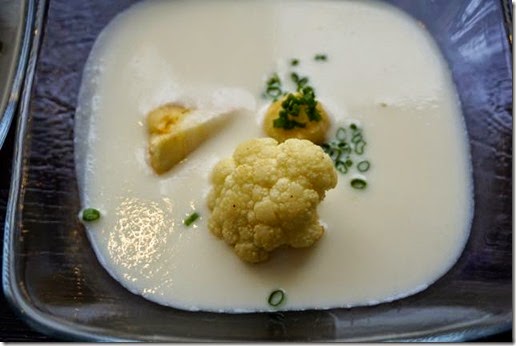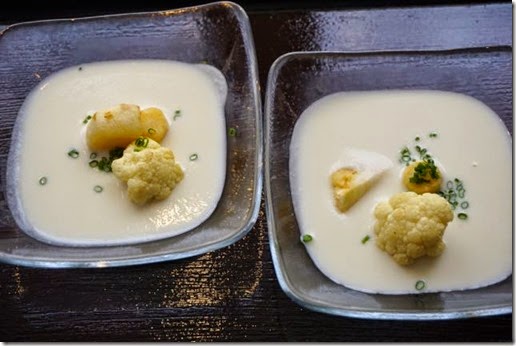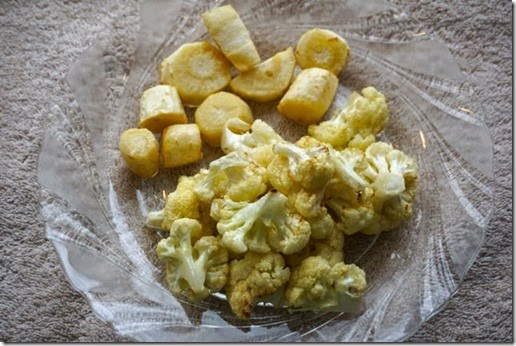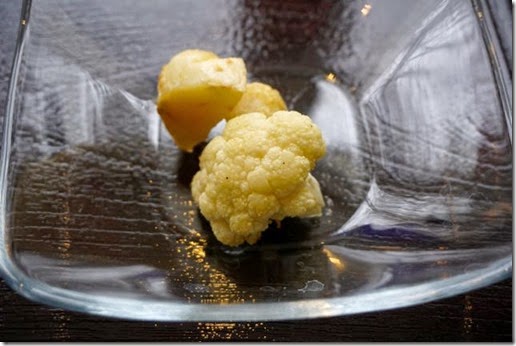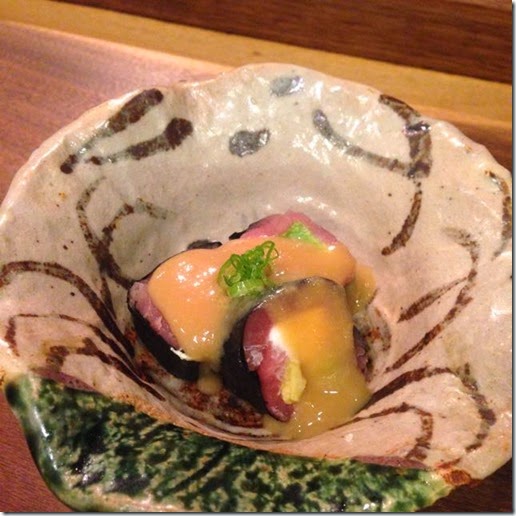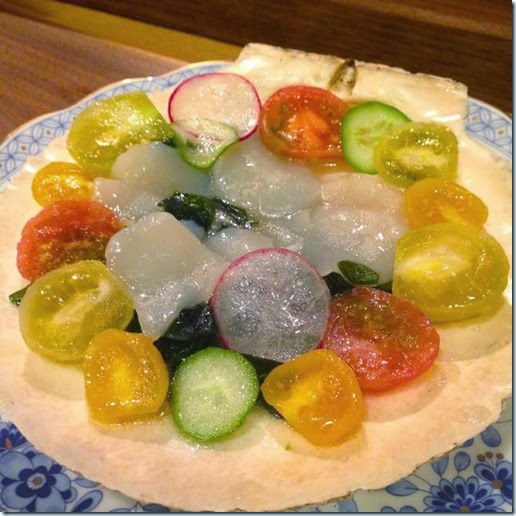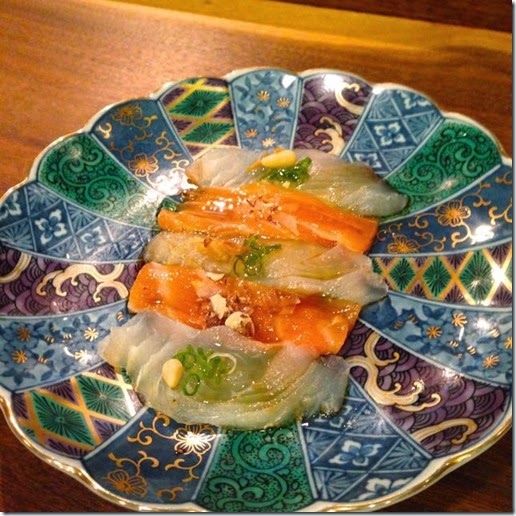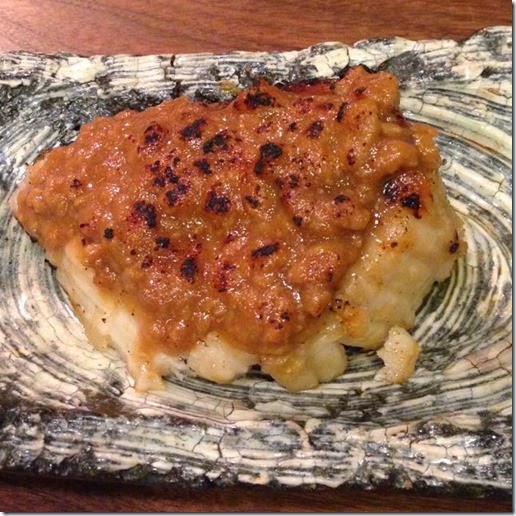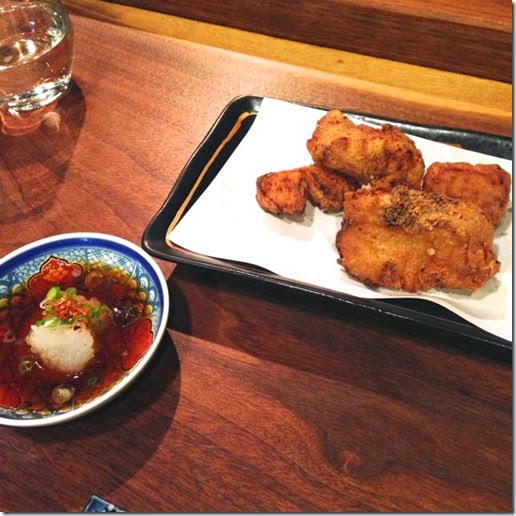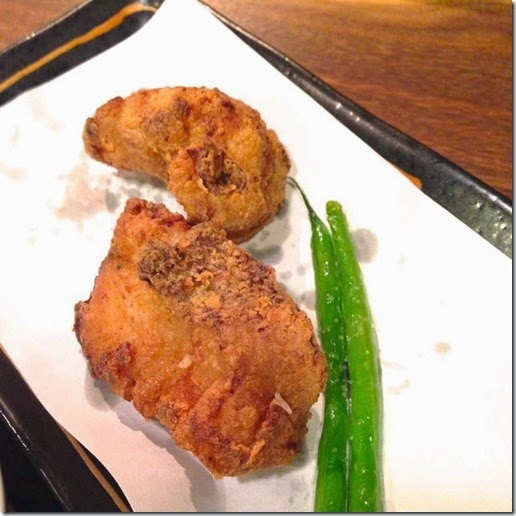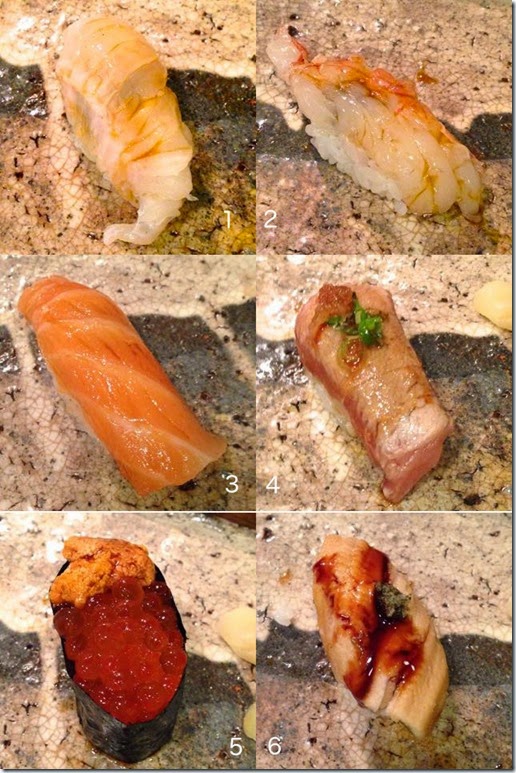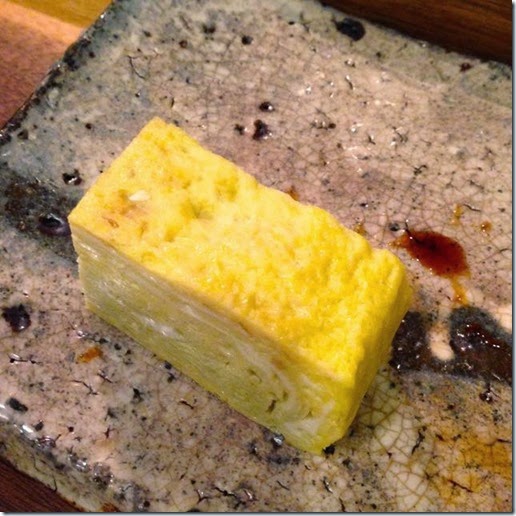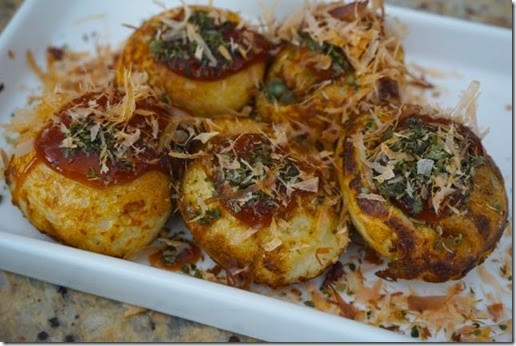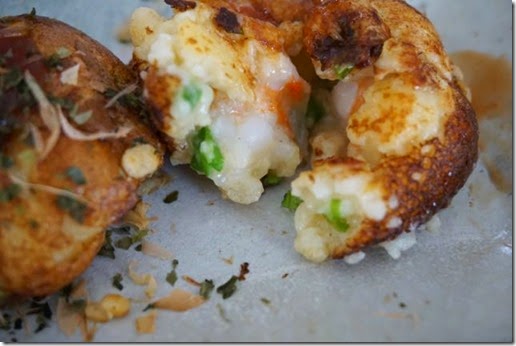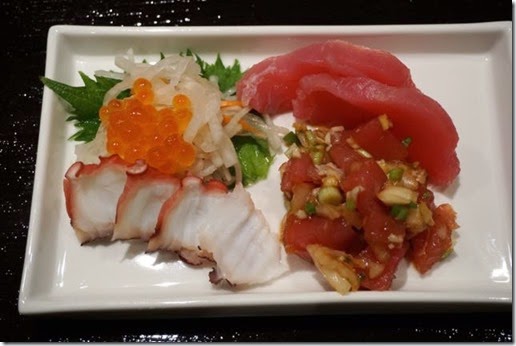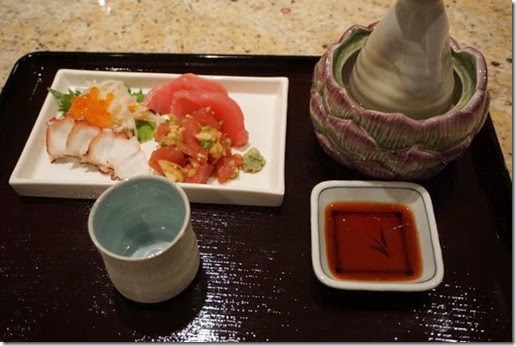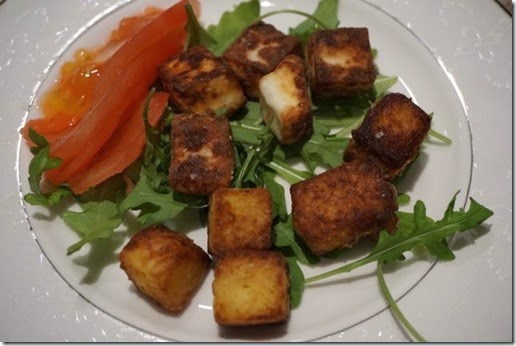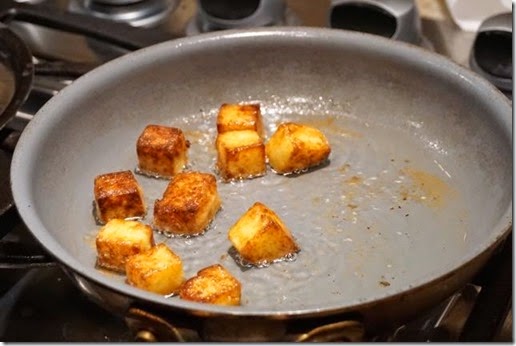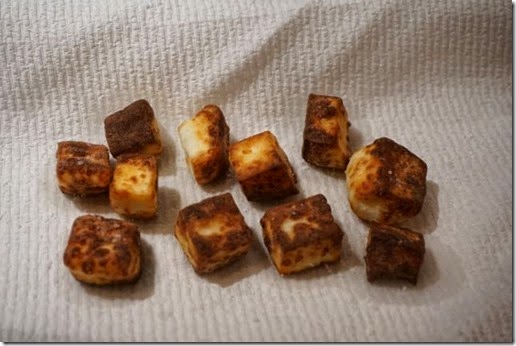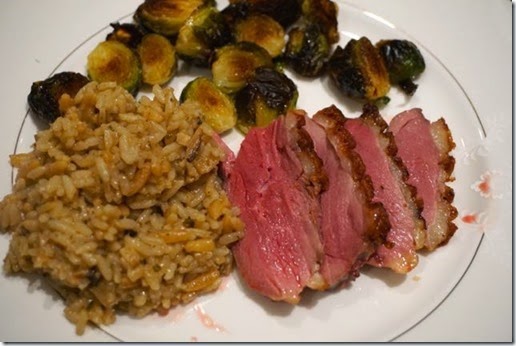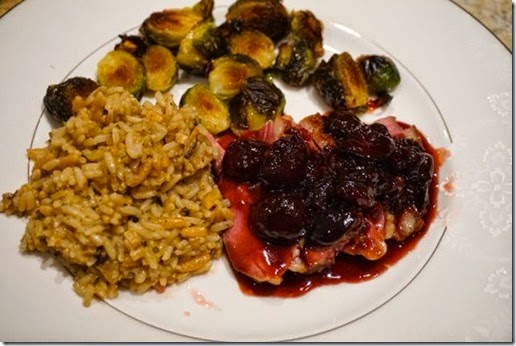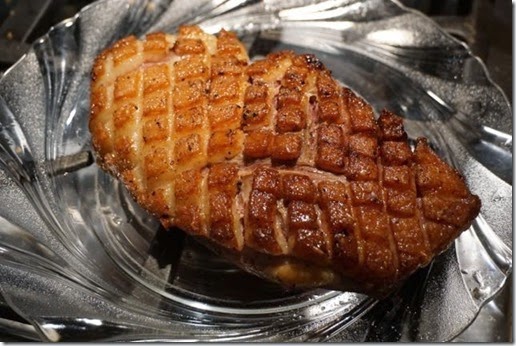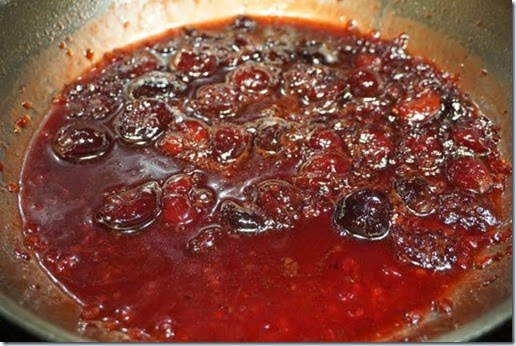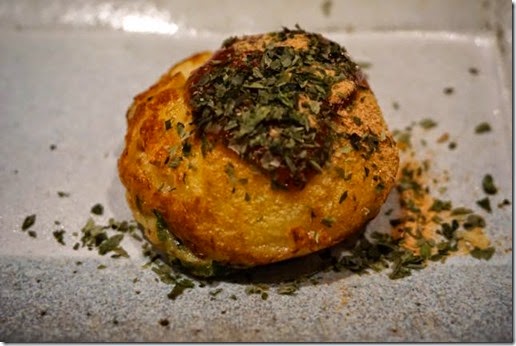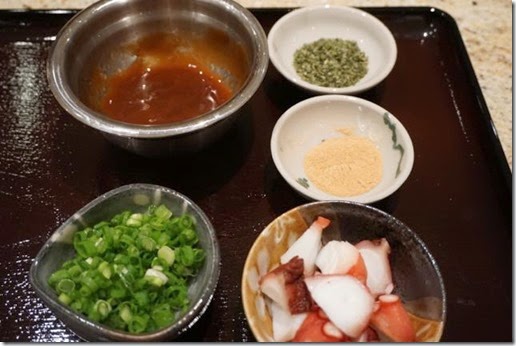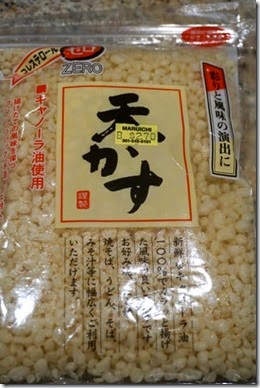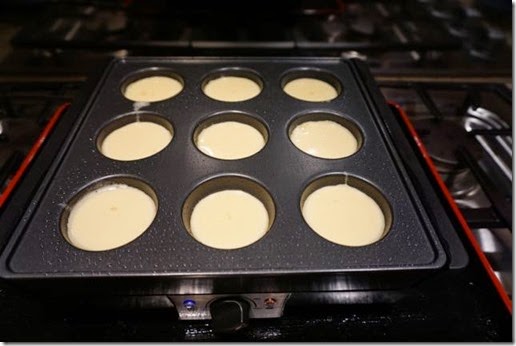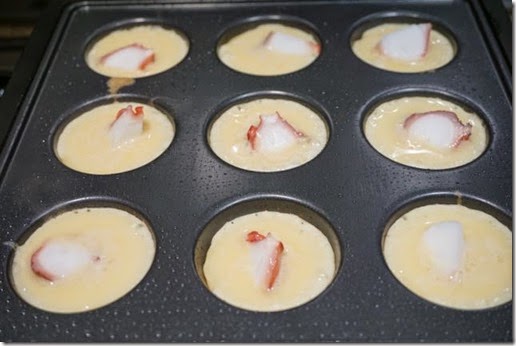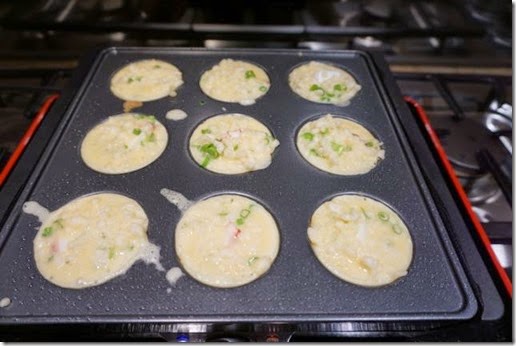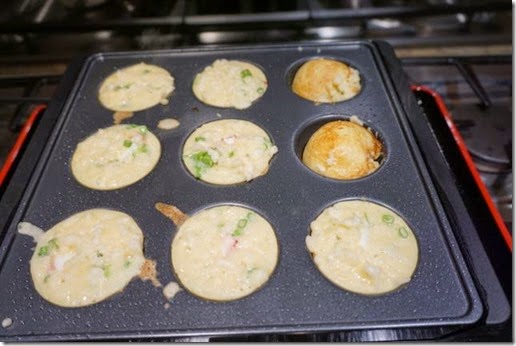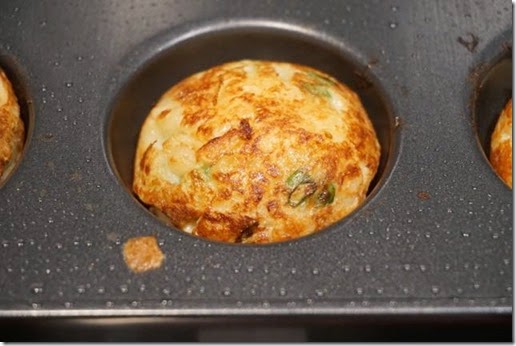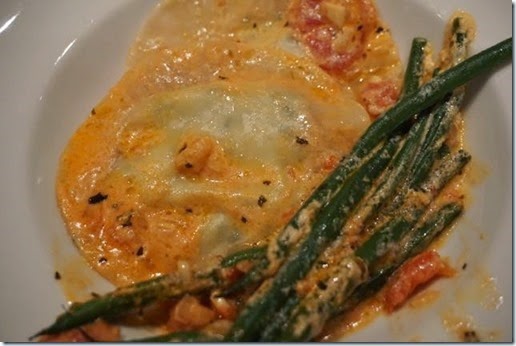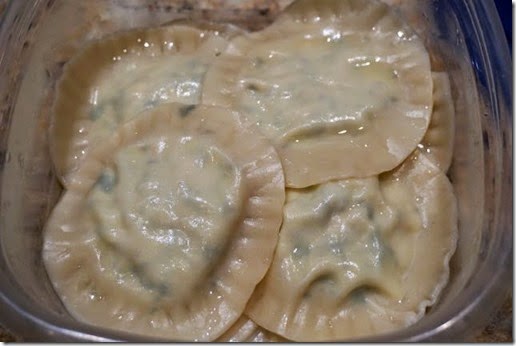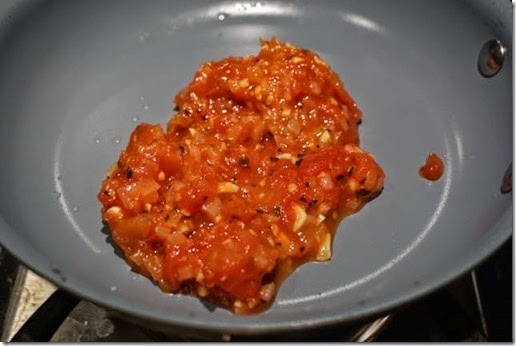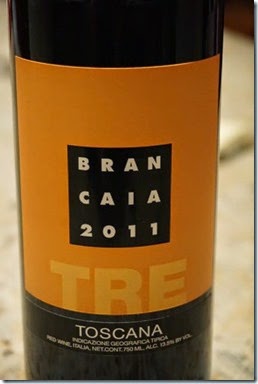Here is the final product. Looking at it brings to mind an oriental burrito perfect for an American Chinese dish.

I am fairly proud, if I do say so myself, for successfully making this thin stretchy Chinese pancake. I smeared store-bought Hoisin sauce on the pancake and topped with the filling then wrapped it in a burrito-style.
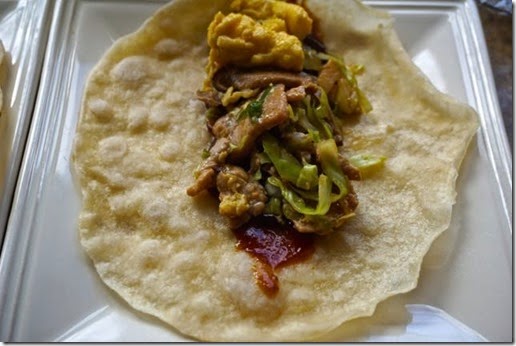
The filling looked like this. I deviated a bit but mostly followed the recipe (in the recipe below, many parts are directly quoted from the original recipe with my added modifications).
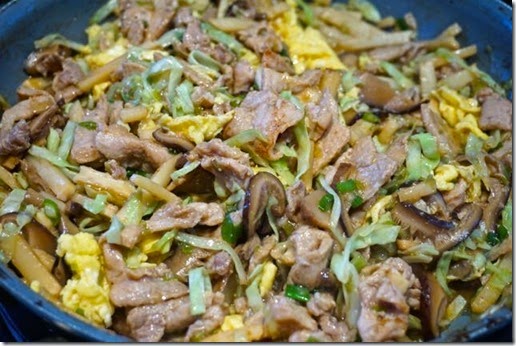
Ingredients for stuffing:
 3 large dried shiitake mushrooms, rinsed
3 large dried shiitake mushrooms, rinsed1/4 cup soy sauce
2 tablespoons mirin
1 teaspoon grated fresh ginger
1/4 teaspoon white pepper
1 (12-ounce) pork tenderloin, sliced thin against grain
2 teaspoons cornstarch
2 tablespoons plus 2 teaspoons peanut oil)
2 eggs, beaten (I seasoned it with 2 tsp of sugar and a small pinch of salt)
6 scallions, white and green parts separated and sliced thin on bias
1 (8-ounce) can bamboo shoots, rinsed and sliced into matchsticks (I used Japanese boiled bamboo shoot in a pouch)
3 cups thinly sliced green cabbage
1/4 cup hoisin sauce
- I soaked the dried mushrooms in cold filtered water, enough to cover, in a sealable container and left them in the refrigerator for 24 hours. I removed the stem, thinly sliced and place them in a small sauce pan with the soaking liquid and cooked for 30 minutes (I could have lightly seasoned with soy sauce and mirin but I did not) on simmer and let it cool (right middle in the picture above). I strained and reserved 1/3 cup of the soaking liquid (for making the final seasoning liquid mix).
- I marinated the pork in 2 tablespoons soy sauce, 2 tablespoon mirin, ginger (right top).
- I mixed the reserved mushroom liquid, remaining 2 tablespoons soy sauce, and 1 tbs of mirin (left upper). I mixed the corn starch in a small amount of sake (or water) in a separate container for thickening the sauce (not shown).
- I heated 2 teaspoons of oil in a skillet over medium-high heat until shimmering. I added eggs and scrambled quickly until set but not dry, about 15 seconds. I transferred these to bowl and broke the scrambled eggs into 1/4- to 1/2-inch pieces with a fork.
- I returned the now-empty skillet to medium-high heat and heated 1 tablespoon of oil until shimmering. I added scallion (left bottom) whites and cooked, stirring frequently, until well browned, 1 to 1 1/2 minutes. Next came the pork mixture. Spread into an even layer and cooked without moving it until well browned on 1 side, 1 to 2 minutes. I stirred and continued to cooking, stirring frequently, until all the pork was opaque, 1 to 2 minutes longer. Then transferred it to the bowl with eggs.
- I returned the now-empty skillet to medium-high heat and heated the remaining 1 tablespoon oil until shimmering. I added the mushrooms and bamboo shoots to the skillet and cooked, stirring frequently, until heated through, about 1 minute. I added the cabbage, all but 2 tablespoons scallion greens, and mushroom liquid mixture and cooked, stirring constantly, until the liquid evaporated and the cabbage was wilted but retained some crunch, 2 to 3 minutes. Then I added the pork and eggs and stirred to combine followed with the cornstarch slurry (enough to thicken the sauce). All this was transferred to a platter and topped with scallion greens.
- I spread about 1/2 teaspoon hoisin sauce in the center of each warm pancake then spooned on the stir-fry over the hoisin sauce and served.
Ingredients for pancake
1 1/2 cups (7 1/2 ounces) all-purpose flour
3/4 cup boiling water
1/2 teaspoons toasted sesame oil
2 teaspoon vegetable oil
- These are the instructions: Using a wooden spoon, mix the flour and boiling water in a bowl to form a rough dough. When cool, transfer dough to a lightly floured surface and knead until it forms a ball that is tacky but no longer sticky, about 4 minutes (dough will not be perfectly smooth). Cover loosely with plastic wrap and let rest for 30 minutes.
- Roll dough into a 12-inch-long log on a lightly floured surface and cut into 12 equal pieces (I cut in half, then cut into 3 equal pieces, then cut in half to make 12 pieces, #1 above)). Turn each piece cut side up and pat into a rough 3-inch disk. Brush both sides of 6 disks with vegetable oil with a splash of sesame oil added (The original recipe calls for all sesame oil but sesame oil is too strong for us); top each disk with oiled sides facing each other, press lightly to form 6 pairs (#2). Roll disks into 7-inch rounds, lightly flouring work surface as needed (#3).
- Heat vegetable oil in a 12-inch nonstick skillet over medium heat until shimmering. Using paper towels, carefully wipe out the oil. Place pancake in the skillet and cook without moving until air pockets begin to form between the layers and underside is dry, 40 to 60 seconds (#4). Flip pancake and cook until a few light brown spots appear on the second side, 40 to 60 seconds. Transfer to a plate and, when cool enough to handle, peel apart into 2 pancakes (#5). Stack pancakes moist side up (#6) and cover loosely with plastic. Repeat with remaining pancakes. Cover pancakes tightly and keep warm. (Pancakes can be wrapped tightly in plastic wrap, then aluminum foil, and refrigerated for up to 3 days or frozen for up to 2 months. Thaw wrapped pancakes at room temperature. Unwrap and place on plate. Invert second plate over pancakes and microwave until warm and soft, 60 to 90 seconds.)
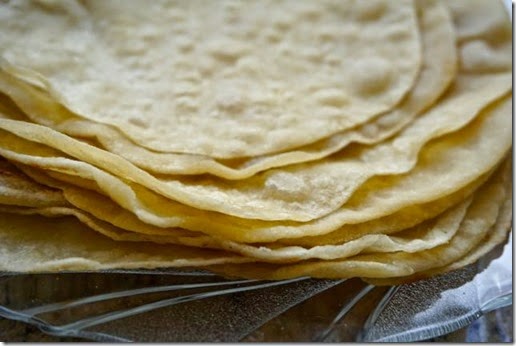
We really liked this American Chinese Mu Shu Pork. Since I substituted mirin for dry sherry and omitted the sugar called for in the original recipe, by itself, the stuffing may have needed a bit more sweetness but once put together on the pancake, the hoisin sauce provided the sweetness which made the overall dish well balanced. I used freshly ground white pepper (instead of usual black pepper) which gave some heat. The use of good quality dried shiitake mushrooms is also important giving tons of "umami" flavor to the dish. In my opinion, the best way to hydrate dried mushrooms is to soak them in cold water in the refrigerator for 24 hours but not in the microwave oven as suggested in the original recipe. The pancakes are really good and this recipe works. At least for us, reducing the sesame oil flavor was an improvement. The pancake had a nice, unique stretchy consistency which cannot be substituted by using flour tortilla.
Since I made Chinese pancake successfully, maybe my next challenge will be making Peking duck but that will be difficult.

